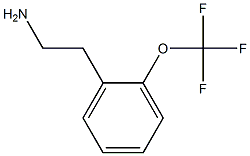2-PhenylethylaMine
Synonym(s):β-Phenylethylamine;2-Phenethylamine;2-Phenylethylamine;Phenethylamine
- CAS NO.:64-04-0
- Empirical Formula: C8H11N
- Molecular Weight: 121.18
- MDL number: MFCD00008184
- EINECS: 200-574-4
- SAFETY DATA SHEET (SDS)
- Update Date: 2025-01-27 09:38:02

What is 2-PhenylethylaMine?
Description
2-Phenylethylamine is a water-soluble amine with a fishy odor. It is often referred to simply as “phenethylamine”, but that can also be interpreted as 1-phenylethylamine1.
2-Phenylethylamine occurs widely in nature: in animals, plants, fungi, and bacteria alike. It has been known since at least 1890; and it was synthesized in 1909 by Treat B. Johnson and Herbert H. Guest at Yale University (New Haven, CT) via the reduction of benzyl cyanide with sodium in ethanol. Later synthetic methods included benzyl cyanide reduction with hydrogen over a Raney nickel catalyst and the reduction of β-nitrostyrene with lithium aluminum hydride.
2-Phenylethylamine is a central nervous system stimulant and is related to many psychoactive compounds such as the amphetamines and catecholamines. Noted (and controversial) chemist/psychopharmacologist Alexander Shulgin performed extensive research on 2-phenylethylamine derivatives, including 3,4-methylenedioxymethamphetamine (MDMA), best known by its street name, “ecstasy”.
Earlier this year, Narciso M. Garrido and colleagues at the University of Salamanca (Spain) published a review of 2-phenylethylamines in medicinal chemistry. Their article focused on open-chain, flexible derivatives such as the catecholamines dopamine, epinephrine (adrenaline), and norepinephrine, compared with constrained polycyclics such as morphine and berberine.
1. CAS Reg. No. 618-36-0.
Chemical properties
colourless or slightly yellow liquid with
Chemical properties
Phenethylamine has a fish odor.
Occurrence
Reported found in the oil of bitter almonds. Also found in grapes, cabbage, kale, carrots, blue and provolone cheese, fatty fish, beer, sherry, grape wines, cocoa, cauliflower, beetroot, radish, rhubarb, sake and dried bonito.
The Uses of 2-PhenylethylaMine
Phenethylamine is used in manufacturing anti-depression agents and anti diabetic drugs. It is also used as the goodds for drug jiangtangling intermediate, also used for other organic synthesis.
Definition
ChEBI: A phenylethylamine having the phenyl substituent at the 2-position.
Preparation
By reduction of benzyl cyanide with sodium metal in alcohol or with Raney-Ni.
Synthesis Reference(s)
Chemical and Pharmaceutical Bulletin, 34, p. 3905, 1986 DOI: 10.1248/cpb.34.3905
Journal of the American Chemical Society, 94, p. 6561, 1972 DOI: 10.1021/ja00773a060
Tetrahedron Letters, 21, p. 1719, 1980 DOI: 10.1016/S0040-4039(00)77819-1
General Description
Phenethylamine, a new stimulant designer drug, was analyzed by the liquid chromatography high-resolution mass spectrometry quadrupole-time-of-flight (LC-HRMS-QTOF) method.
Safety Profile
Poison by intraperitoneal, subcutaneous, intracervical, and intravenous routes. Moderately toxic by ingestion. A strong base. A skin irritant and possible sensitizer. When heated to decomposition it emits toxic fumes of NOx. See also AMINES
Purification Methods
Distil the amine from CaH2, under reduced pressure, just before use. [Beilstein 12 H 1096, 12 IV 2453.]
Properties of 2-PhenylethylaMine
| Melting point: | -60 °C |
| Boiling point: | 197-200 °C (lit.) |
| Density | 0.962 g/mL at 20 °C (lit.) |
| vapor density | 4.18 (vs air) |
| vapor pressure | 0.4 hPa (20 °C) |
| FEMA | 3220 | PHENETHYLAMINE |
| refractive index | n |
| Flash point: | 195 °F |
| storage temp. | Store below +30°C. |
| solubility | alcohol: freely soluble(lit.) |
| appearance | colorless liquid |
| form | liquid |
| pka | 9.84(at 25℃) |
| color | clear, colorless |
| Odor | fishy odor |
| PH | 11.5 (4.3g/l, H2O, 20℃) |
| PH Range | 11.5 at 4.3 g/l at 20 °C |
| explosive limit | 1.0-5.5%(V) |
| Water Solubility | SOLUBLE |
| Sensitive | Air Sensitive |
| Merck | 14,6026 |
| JECFA Number | 1589 |
| BRN | 507488 |
| Stability: | Stable. Combustible. Incompatible with strong oxidizing agents, strong acids. |
| CAS DataBase Reference | 64-04-0(CAS DataBase Reference) |
| NIST Chemistry Reference | Benzeneethanamine(64-04-0) |
| EPA Substance Registry System | Phenethylamine (64-04-0) |
Safety information for 2-PhenylethylaMine
| Signal word | Danger |
| Pictogram(s) |
 Corrosion Corrosives GHS05  Skull and Crossbones Acute Toxicity GHS06 |
| GHS Hazard Statements |
H290:Corrosive to Metals H301:Acute toxicity,oral H314:Skin corrosion/irritation |
| Precautionary Statement Codes |
P234:Keep only in original container. P270:Do not eat, drink or smoke when using this product. P280:Wear protective gloves/protective clothing/eye protection/face protection. P303+P361+P353:IF ON SKIN (or hair): Remove/Take off Immediately all contaminated clothing. Rinse SKIN with water/shower. P305+P351+P338:IF IN EYES: Rinse cautiously with water for several minutes. Remove contact lenses, if present and easy to do. Continuerinsing. |
Computed Descriptors for 2-PhenylethylaMine
| InChIKey | BHHGXPLMPWCGHP-UHFFFAOYSA-N |
New Products
4,4-Difluoropiperidine hydrochloride tert-butyl 9-methoxy-3-azaspiro[5.5]undecane-3-carboxylate Indole Methyl Resin N-Isopropylurea N,N-Dicyclohexylcarbodiimide(DCC) MELDRUMS ACID 5-METHYLISOXAZOLE-4-CARBOXYLIC ACID Magnessium Bis glycinate Zinc ascorbate 1-bromo-2-butyne 2-acetamidophenol 9(10H)-anthracenone Erythrosin B, 4-Piperidinopiperidine 2-((4-morpholinophenylamino) (methylthio) methylene) malononitrile 2,4-dihydroxybenzaldehyde 3-(4-morpholinophenylamino)-5-amino-1H-pyrazole-4-carbonitrile Methyl 2-methylquinoline-6-carboxylate 2,6-dichloro-4-nitropyridine 4-Bromo-2-chlorobenzonitrile 2-(benzylamino)acetic acid hydrochloride 4-(tert-Butoxycarbonylamino)but- 2-ynoic acid 3,4-dihydro-2H-benzo[b][1,4]dioxepine 1-Phenyl-1-cycloprppanecarboxylicacidRelated products of tetrahydrofuran








You may like
-
 Phenethylamine CAS 64-04-0View Details
Phenethylamine CAS 64-04-0View Details
64-04-0 -
 2-Phenyl Ethylamine pure CAS 64-04-0View Details
2-Phenyl Ethylamine pure CAS 64-04-0View Details
64-04-0 -
 ß-Phenylethylamine, 99% CAS 64-04-0View Details
ß-Phenylethylamine, 99% CAS 64-04-0View Details
64-04-0 -
 Phenethylamine CAS 64-04-0View Details
Phenethylamine CAS 64-04-0View Details
64-04-0 -
 3-(4-amino-1-oxoisoindolin-2-yl)-1-methylpiperidine-2,6-dione 98%View Details
3-(4-amino-1-oxoisoindolin-2-yl)-1-methylpiperidine-2,6-dione 98%View Details -
 20677-73-0 (2,2-diethoxyethyl)methylamine 98%View Details
20677-73-0 (2,2-diethoxyethyl)methylamine 98%View Details
20677-73-0 -
 3-(4-(hydroxyamino)-1-oxoisoindolin-2-yl)piperidine-2,6-dione 98%View Details
3-(4-(hydroxyamino)-1-oxoisoindolin-2-yl)piperidine-2,6-dione 98%View Details -
 57381-49-4 2-bromo-4-chlorobenzonitrile 98%View Details
57381-49-4 2-bromo-4-chlorobenzonitrile 98%View Details
57381-49-4
